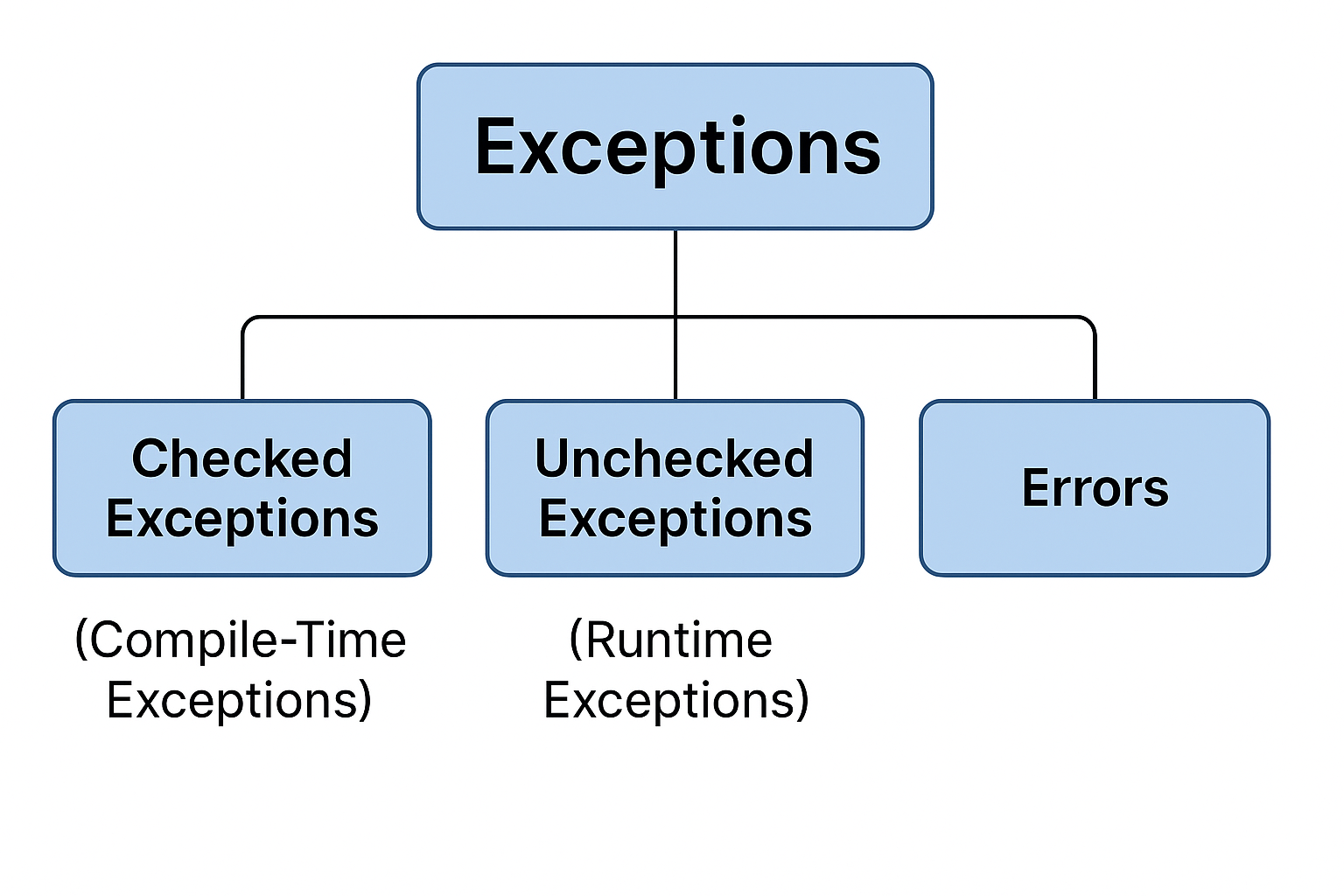Types of Exceptions Explained: Beginner to Advanced Guide for Developers
Flowchart explaining different types of exceptions in programming
Types of Exceptions: A Complete Guide for Developers
Exception handling is a crucial concept in programming that ensures your application can gracefully handle errors without crashing. Whether you’re a beginner or an experienced developer, understanding the types of exceptions helps you write robust and maintainable code.
In this guide, we’ll explore what exceptions are, their main types, and examples in popular programming languages like Java, Python, and C#.

What Is an Exception?
An exception is an event that occurs during program execution that disrupts the normal flow of instructions. Exceptions often happen due to invalid input, unavailable resources, or logical errors in the code.
Instead of letting the program crash, developers use exception handling to detect and respond to these events.
Main Types of Exceptions
While the classification may vary slightly depending on the programming language, exceptions are generally divided into three main categories.
1. Checked Exceptions (Compile-Time Exceptions)
Definition: Exceptions that are checked at compile time by the compiler.
Key Feature: The compiler forces you to handle them using
try-catchblocks or by declaring them with thethrowskeyword (in Java).Examples:
Java:
IOException(File not found, network issues)SQLException(Database access errors)
Best Practice: Always handle checked exceptions to prevent compile-time errors.
2. Unchecked Exceptions (Runtime Exceptions)
Definition: Exceptions that occur during program execution and are not checked at compile time.
Key Feature: These are usually caused by programming mistakes, such as logic errors or improper input validation.
Examples:
Java:
NullPointerExceptionArrayIndexOutOfBoundsException
Python:
ZeroDivisionErrorValueError
Best Practice: Avoid them through proper coding practices and validation checks.
3. Errors
Definition: Serious problems that occur beyond the control of the program and usually cannot be recovered from.
Key Feature: Represent conditions where the JVM or runtime environment is in a broken state.
Examples:
Java:
OutOfMemoryErrorStackOverflowError
Best Practice: These should not be handled in normal application logic; instead, focus on preventing them through resource management.
Language-Specific Example: Java
public class ExceptionExample {
public static void main(String[] args) {
try {
int result = 10 / 0; // Will cause ArithmeticException
} catch (ArithmeticException e) {
System.out.println("Cannot divide by zero!");
}
}
}
In this example, ArithmeticException is an unchecked exception because it occurs at runtime.
Why Understanding Exception Types Matters
Knowing the types of exceptions is important because:
It helps you choose the right handling strategy.
It improves program stability and user experience.
It makes debugging and maintenance easier.
It’s essential for passing technical interviews and coding assessments.
Final Thoughts
Exceptions are inevitable in programming, but they don’t have to break your application. By understanding the different types of exceptions—checked, unchecked, and errors—you can build applications that handle failures gracefully.
When coding, always anticipate potential issues, validate inputs, and use structured exception handling to keep your software robust and user-friendly.
Table of content
- Arrays
- Structures
- Polynomials
- Stacks
- Linked Lists
- Queues
- Searching and Sorting
- Trees